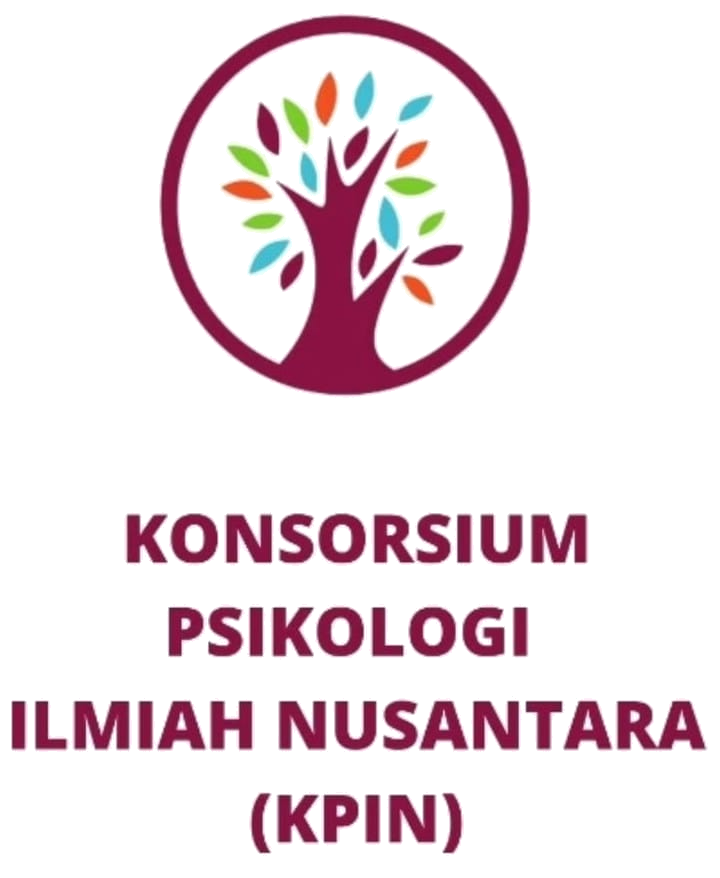Peran Asertivitas terhadap Kecenderungan Perempuan Dewasa Awal menjadi Korban Kekerasan dalam Pacaran
DOI:
https://doi.org/10.35814/mindset.v15i02.4968Keywords:
assertiveness, early adulthood, dating violenceAbstract
The intimacy vs isolation phase is encountered by persons transitioning into early adulthood. During this stage, individuals desire to establish close and personal connections, with one of the chosen relationships being dating. An issue that frequently occurs is the utilization of violence. The objective of this study is to examine the role of assertiveness on the susceptibility of young adult women to experience dating violence. The sample size for this quantitative study was 150 partisipants, selected using the convenient sampling technique based on the following criteria: 1) Female; 2) Age between 18 and 35; 3) Residing in Jakarta; 4) Involvement in a heterosexual love relationship. In this study, two Likert measures were used: the Assertiveness Scale with 20 items and a reliability coefficient (α) of 0.873, and the Composite Abuse Scale (revised)-Short Form (CASR-SF) with 20 items and a reliability coefficient of 0.953. The regression test revealed a statistically significant negative effect between assertiveness and the tendency to experience dating violence among adult women in Jakarta. These findings suggest that persons who display higher levels of assertiveness are less likely to experience dating violence. It is suggested that future research will be able to explore various other variables that might influence dating violence on the relationship dynamics of early adult couples in Indonesia.
References
Alberti, E. R., & Emmons, L. M. (2008). Your perfect right: Assertiveness and equality in your life and relationships. Impact Publisher.
Ali, P. A., & Naylor, P. B. (2013). Intimate partner violence: A narrative review of the biological and psychological explanations for its causation. Aggression and Violent Behavior, 18(3), 373–382. https://doi.org/10.1016/j.avb.2013.01.003
American Psychological Association. (1996). Violence and the family: Report of the APA Presidential Task Force on Violence and the Family. Author.
Andayu, A., Rizkyanti, A. C., & Kusumawar-dhani, J. S. (2019). Peran insecure attachment terhadap kekerasan psikologis dalam pacaran pada perempuan remaja akhir. Jurnal Ilmiah Psikologi, 6(2), 181–190.
Arnett, J. J. (2000). Emerging adulthood: A theory of development from the late teens through the twenties. American Psychologist, 55(5), 469–480. https://doi.org/10.1037/0003-066X.55.5.469
Badan Pusat Statistik Jakarta. (2022, Juli 10). Jumlah penduduk provinsi DKI Jakarta menurut kelompok umur dan jenis kelamin (jiwa). https://jakarta.bps.go.id/indicator/12/111/1/jumlah-penduduk-provinsi-dki-jakarta-menurut-kelompok-umur-dan-jenis-kelamin.html
Beaton, D. E., Bombardier, C., Guillemin, F., & Ferraz, M. B. (2000). Guidelines for the process of cross-cultural adaptation of self-report measures. Spins, 25(24), 3186-3191
DeGenova, M. K. & Rice, P. F. (2005). Intimate relationship, marriages, and families. MC Grow-Hill.
Diadiningrum, J. R., & Endrijati. H. (2014). Hubungan antara Sikap Asertivitas dengan Kecenderungan Menjadi Korban Kekerasan dalam Pacaran pada Remaja. . Jurnal Psikologi Pendidikan Dan Perkembangan, , 3(2), 97–102.
Erikson, E. (2013). Childhood and society. Norton.
Ford-Gilboe, M., Wathen, C. N., Varcoe, C., MacMillan, H. L., Scott-Storey, K., Mantler, T., Hegarty, K., & Perrin, N. (2016). Development of a brief measure of intimate partner violence experiences: the Composite Abuse Scale (Revised)—Short Form (CAS R -SF). BMJ Open, 6(12), e012824. https://doi.org/10.1136/bmjopen-2016-012824
Hegarty, K. , & R. G. (1998). How common is domestic violence against women? The definition of partner abuse in prevalence studies. Australian and New Zealand Journal of Public Health, 22, 55–60.
Indriya, C. (2014). Hubungan asertivitas dengan kekerasan dalam berpacaran pada perempuan dewasa awal . [Univeristas Santa Dharma].
Jaelani, M., & Dewi Y. (2016). Fenomena kekerasan dalam pacaran. . Lembaga Penelitian & Pengabdian Masyarakat, UIN Sumatera Utara Medan.
Kaukinen, C., Buchanan, L., & Gover, A. R. (2015). Child abuse and the experience of violence in college dating relationships: Examining the moderating effect of gender and race. Journal of Family Violence, 30(8), 1079–1092. https://doi.org/10.1007/s10896-015-9731-9
Kementerian Pemberdayaan Perempuan dan Perlindungan Anak. (2022,Juli 19). KEMENPPA. SIMFONI PPA (Sistem Informasi Online Perlindungan Perempuan dan Anak). https://Kekerasan.Kemenpppa.Go.Id/Ringkasan.
Khaninah, A. N., & Widjanarko, M. (2017). Perilaku agresif yang dialami korban kekerasan dalam pacarana. Jurnal Psikologi Undip, 15(2), 151. https://doi.org/10.14710/jpu.15.2.151-160
Khoirunnisa, A. (2021). Gambaran asertivitas pada perempuan penyintas kekerasan dalam berpacaran(Studi kasus pada penyintas kekerasan dalam pacaran). [Universitas Pendidikan Indonesia].
Komisi Nasional Perempuan. (2021, Januari 5). Catatan tahunan tentang kekerasan terhadap perempuan 2020: Perempuan dalam himpitan pandemi. . Https://Komnasperempuan.Go.Id/Catatan-Tahunan-Detail/Catahu-2021-Perempuan-Dalam-Himpitan-Pandemi-Lonjakan-Kekerasan-Seksual-Kekerasan-Siber-Perkawinan-Anak-Dan-Keterbatasan-Penanganan-Di-Tengah-Covid-19.
Lee, J., Pomeroy, E. C., & Bohman, T. M. (2007). Intimate partner violence and psychological health in a sample of asian and caucasian women: The roles of social support and coping. Journal of Family Violence, 22(8),709–720. https://doi.org/10.1007/s10896-007-9119-6
Maulidini, S. A. (2020). Hubungan kekerasan dalam pacaran dan self-concept clarity pada perempuan dewasa muda. [Universitas Pelita Harapan].
Murray, J. (2007). But i love him: Protecting your daughter from controlling, abusive dating relationship. Harper Collins Publisher.
Pratita, H. S., & Herdiana, I. (2022). Hubungan antara Asertivitas dengan Kekerasan dalam Pacaran pada Wanita Dewasa Awal. Buletin Riset Psikologi Dan Kesehatan Mental (BRPKM), 2(1), 582–589. https://doi.org/10.20473/brpkm.v2i1.34579
Qinthara, S. A. (2021). Pengaruh harga diri terhadap kekerasan emosional dalam berpacaran pada dewasa muda di kota Bandung. Jurnal Psikologi Insight, 5(2), 1–13. https://ejournal.upi.edu/index.php/insight/article/view/44095
Scott, K., & Straus, M. (2007). Denial, minimization, partner blaming, and intimate aggression in dating partners. Journal of Interpersonal Violence, 22(7), 851- 871. https://doi.org/10.1177/0886260507301227
Straus, M. A., Hamby, S. L., Boney-McCoy, S., & Sugarman, D. B. (1996). The revised conflict tactics scales (CTS2). Journal of Family Issues, 17(3), 283–316. https://doi.org/10.1177/019251396017003001
Syafira, G. A. , & Kustanti, E. R. (2017). Gambaran asertivitas pada perempuan yang pernah mengalami kekerasan dalam pacaran. Jurnal Empati, 6(1), 186–198. https://Ejournal3.Undip.Ac.Id/Index.Php/Empati/Article/View/15209/14705
Wahyuni, D. S., Komariah. S., & Sartika., K. (2020). Analisis faktor penyebab kekerasan dalam hubungan pacaran pada mahasiswa Universitas Pendidikan Indonesia. Sosietas, 10(2), 923–928. http://ejournal.upi.edu/index.php/sosietas/
Walker, L. E. (1977). Who are the battered women?. A Journal of Women Studies, 2(1), 52. https://doi.org/10.2307/3346107












